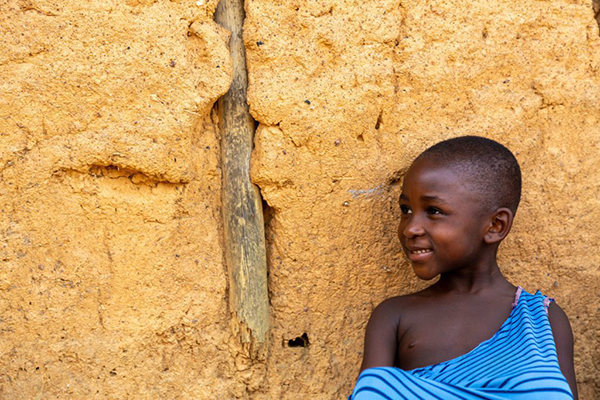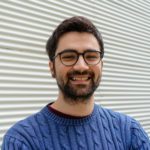Yaws, also called framboesia, is an infectious and disfiguring Neglected Tropical Disease (NTD) caused by a bacterium. Every year over 90,000 cases of yaws are detected around the world, mainly in impoverished communities of the tropical regions of Africa, Asia, Latin America, and the Pacific. Its main victims are children aged under 15 (around 75-80% of cases).
It affects the skin, bones and cartilage, and it manifests as a lump or papilloma, normally in the arms or legs. The bacterium that causes it, Treponema pallidum (sub-species pertenue), is very similar to the bacterium causing syphilis. If not treated in time, the initial lump can ulcerate and affect cartilage and bones, causing disability.
Yaws: understanding the Forgotten Tropical Disease
Yaws is a neglected tropical disease that affects the skin, bones and joints, mainly in children living in poor, rural areas. As we mentioned before, it is caused by a bacterium closely related to the one that causes syphilis. Though largely forgotten in global health discussions, yaws still affects thousands across tropical regions. Without treatment, it can lead to disfigurement and disability. Renewed attention is now helping bring this disease back onto the global health agenda.
What is yaws and how does it spread?
Yaws spreads through direct skin contact with the sores of an infected person. Children are most commonly affected, especially in warm, humid regions where people often go barefoot. Transmission often happens during play or daily activities in the community. Poor living conditions and lack of hygiene increase the risk of spread. Unlike some diseases, it does not spread through insects or water.
Symptoms and disease progression
Yaws usually begins with a small, painless sore or bump on the skin, often called a “mother yaw”. As the disease progresses, painful skin lesions, bone swelling and joint problems can develop. If left untreated, yaws can cause severe tissue and bone damage over time. Advanced stages are rare today but can lead to lifelong disability; that’s why early detection is key to preventing complications.
Treatment and follow-up
The treatment for yaws is quite simple: a single dose of azithromycin, an antibiotic that can be found in any pharmacy, which costs less than 4.50 euros and can cure the infection. In some cases, penicillin injections are also used. After treatment, sores usually heal quickly, and follow-up visits help ensure the infection has cleared. Mass drug administration campaigns have been successful in treating whole communities. Ongoing monitoring is essential to prevent new outbreaks.
Prevention and control in Africa
Preventing yaws focuses on early case detection, community treatment and improving hygiene practices. Mass drug administration programs are key to break transmission cycles. Public health teams work closely with local leaders to reach remote communities. Improving access to clean water and sanitation also reduces the risk of infection. Long-term success relies on strong health systems and community involvement.
Health education and hygiene practices
Health education plays a vital role in controlling yaws by teaching families about early symptoms and hygiene. Programs often target schools and local leaders to spread awareness. Promoting handwashing, wound care, and clean environments reduces transmission. Educating communities helps reduce stigma and encourages people to seek treatment.
WHO classification of African countries
The World Health Organization (WHO) classifies African countries by their yaws burden, from endemic to non-endemic. Countries with ongoing transmission require mass treatment campaigns, while others focus on surveillance. This classification helps direct resources and coordinate international support. It also allows for progress tracking and guides national elimination strategies. Countries like Ghana and Ivory Coast have been leading elimination efforts.
Recent trends and data from Africa
Recent data show declining yaws cases in many African regions, thanks to mass drug campaigns and better surveillance. However, some areas remain hotspots, especially in remote communities. Mapping studies and household surveys help identify where cases persist. The data highlight the need for continued investment in public health. Without vigilance, there’s a risk of resurgence.
WHO strategies and partnerships
The WHO leads global yaws eradication efforts through partnerships with governments, NGOs, and local communities. Strategies include mass drug administration, training health workers and strengthening surveillance. Partnerships with pharmaceutical companies have secured antibiotic donations. Collaboration across sectors ensures resources reach the most vulnerable. These alliances are vital to sustaining momentum toward eradication.
Research and future directions
Ongoing research is exploring faster diagnostic tools, new treatment regimens and strategies for hard-to-reach áreas, while scientists are studying how to detect asymptomatic carriers to stop transmission. Future efforts may combine yaws control with programs targeting other skin diseases. Research into community-led approaches is also gaining importance. Innovation will be crucial for achieving lasting elimination.
Impact on quality of life
Yaws has a profound impact on the quality of life, especially for children. Skin lesions and deformities can cause pain, disability, and social stigma. Affected individuals may face isolation, discrimination, and loss of schooling or work opportunities. Treating yaws not only improves health but restores dignity and social participation. Ending the disease would transform lives and communities.
Eradication efforts and future outlook
Global eradication of yaws is now seen as an achievable goal, with WHO aiming for elimination by 2030. Mass treatment, combined with surveillance and community engagement, has led to remarkable progress. Challenges remain, such as reaching isolated populations and maintaining funding. At Fundación Anesvad, we combat yaws and other skin NTDs so that those who suffer from it can emerge from oblivion and live their lives with dignity and health. Yaws could become the next disease to be wiped out worldwide if sufficient resources are dedicated to this. That is our aim.





